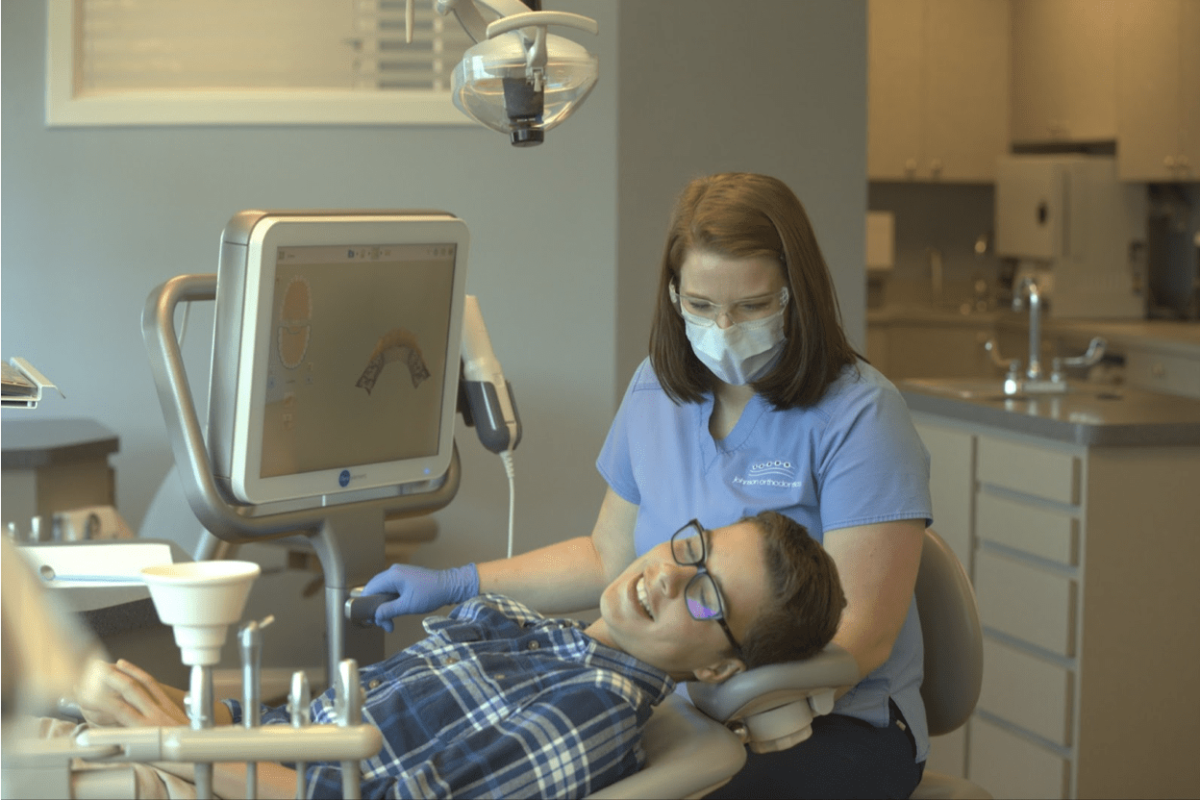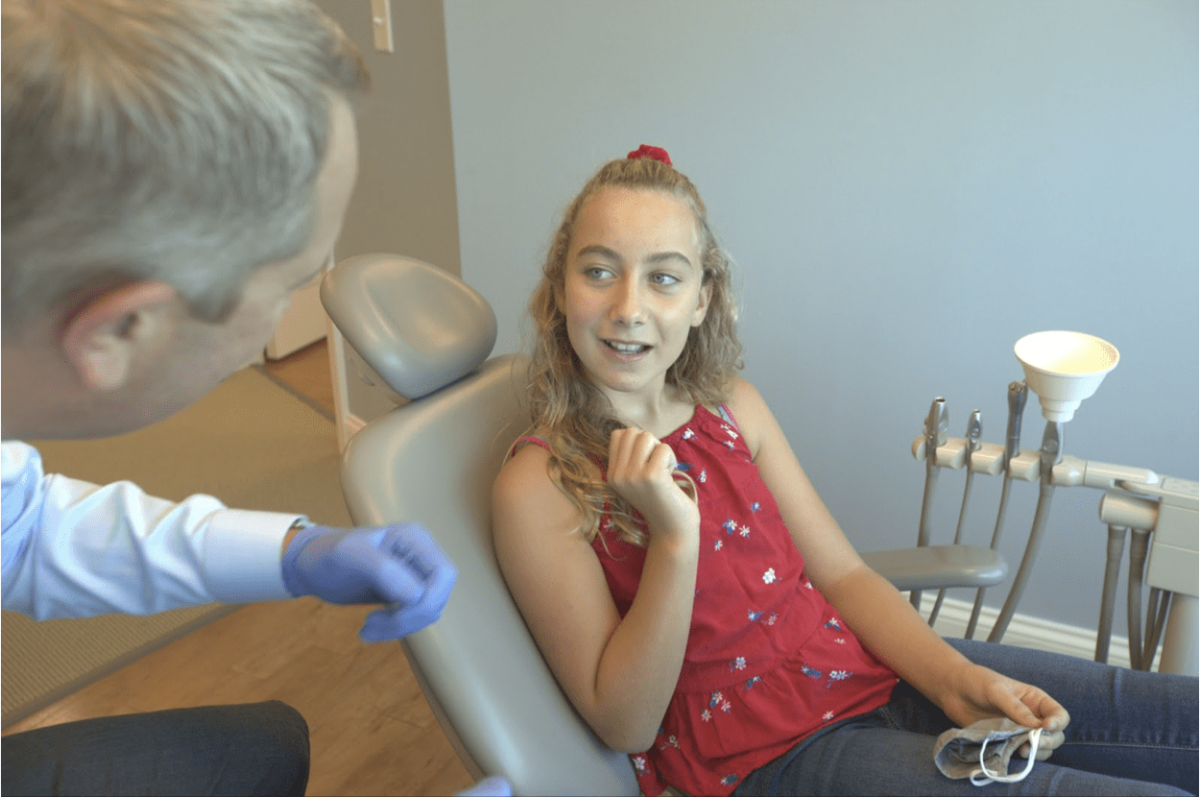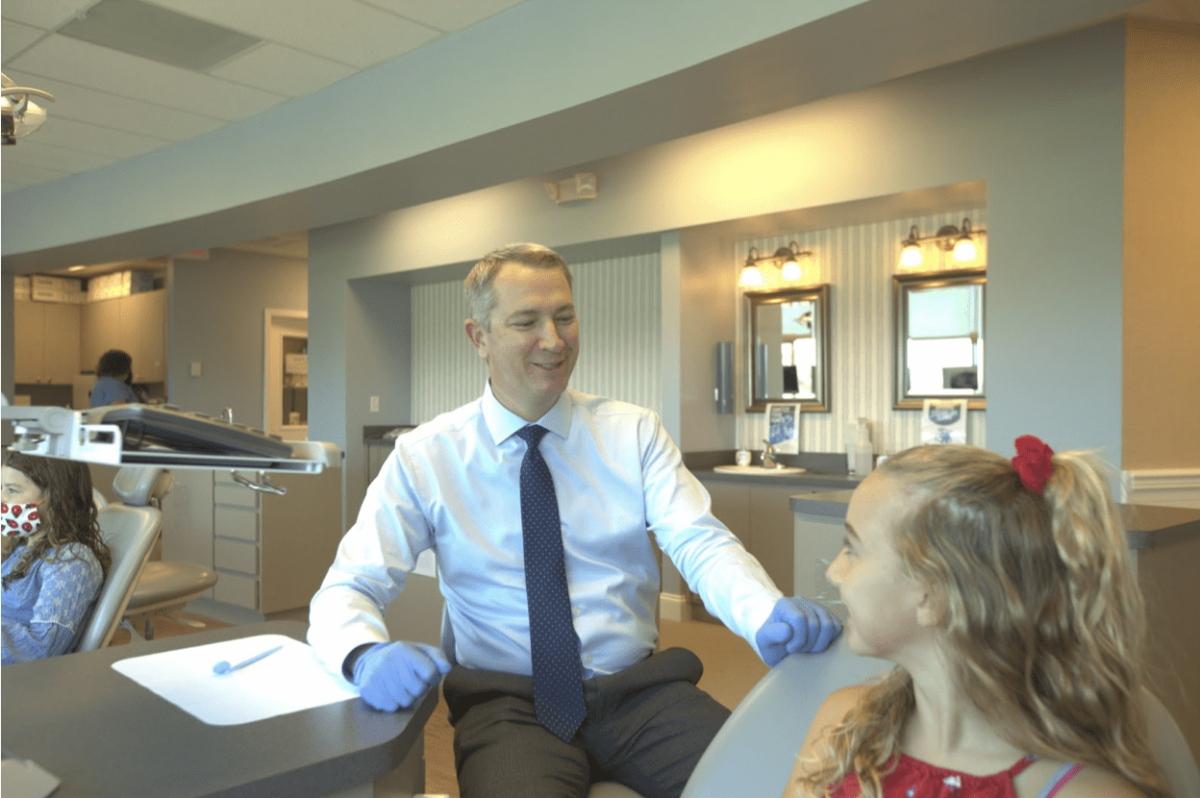Braces have had many technological advancements over the years. They’ve gone from being bulky, awkward, and painful to smaller, sleeker, and more comfortable than ever. With these advancements come more treatment options to choose from. At Johnson Orthodontics, we want you to enjoy all the benefits advanced orthodontic technology has to offer. Let’s take a look at the types of braces our practice offers.
First of all, we’d like to point out that there are many benefits to getting braces, regardless of which type of treatment you choose. At Johnson Orthodontics, our cutting-edge technology and educated team are able to successfully treat many dental issues, including:
- Crossbite
- Crowded teeth
- Protruding teeth
- Gaps between teeth
- Overbite or underbite
Since every patient has a unique smile, our team creates a personalized treatment plan for everyone who comes into our office. If you’ve been considering orthodontic treatment to achieve your ideal smile, we have a wide range of affordable options available for patients of all ages, including braces. These are the most popular treatments, year after year, so let’s take a look at what they are, how they work, and how we can use them to give you the results you want.
Types of braces
Metal braces
Metal braces are the most common and widely recognized type of orthodontic treatment. These braces are made out of stainless steel and other high-quality metals, so they are very durable and long-lasting. Metal braces don’t need some of the more complex technology or expensive equipment that newer treatments do, so they tend to be a more affordable option.
Ceramic braces
Also known as clear braces, ceramic braces function in much the same way traditional metal braces do. However, this option is made from tooth-colored ceramic brackets. Ceramic braces are roughly the same size and shape as metal braces, but they blend in with your natural smile for a more discreet treatment option. This choice is particularly popular amongst adults and older teens due to their nearly invisible appearance.
The only disadvantage of ceramic braces is that they are slightly more prone to chipping or cracking. Since metal braces tolerate more pressure than ceramic ones, our team may only suggest them if you have more complex oral issues. With the right attention and care, they can be just as effective and comfortable as traditional metal braces!
Invisalign clear aligners
The Invisalign system is made up of clear, removable aligners custom-made to fit comfortably over your teeth. You’ll have to wear them twenty to twenty-two hours per day throughout the treatment process and replace them every one to two weeks for the next aligner in the system, as directed by your orthodontist. Much like ceramic braces, this is a popular option for older patients because of its more discreet appearance.
Invisalign offers patients more flexibility compared to traditional braces. You can remove them during meals, so there are fewer food restrictions, and it’s easy to keep your teeth and gums clean and healthy since you don’t have to work around wires and brackets. When it’s time to brush and floss, just take them out, rinse, and you’re ready to go!
Caring for your braces
No matter what type of braces you choose, you’ll have to make a few adjustments to your oral hygiene routine to accommodate your mouth’s new condition. If you struggle with brushing and flossing effectively while wearing braces, there are tools available to make the process easier. Waterpiks help rinse any hard-to-reach areas and ortho picks can assist with flossing. We recommend brushing twice a day for at least two minutes each time and flossing every night before bed to keep your teeth and gums healthy.
Another thing to consider is changes to your diet. Sticky and crunchy foods can damage your brackets and wires, so you will need to avoid these kinds of foods during your treatment. Just remember, these restrictions won’t last forever! Any minor frustrations will be more than worth it once your braces come off and you see your beautiful new smile.
During your treatment, you should expect to come in for follow-up visits every four to eight weeks. At these appointments, Dr. Johnson will change the bands that are attached to the brackets and may replace the wire as well. These check-ups are usually brief, and we are an on-time office, so you won’t have to miss much time away from school or work. There may be some residual soreness following these adjustments, but this should go away quickly. These visits are a very important part of your overall treatment plan. We want to help you get the extraordinary results you deserve, so don’t forget to stop by!
Get the smile you deserve at Johnson Orthodontics
No matter how old you are or where you are in your orthodontic journey, you deserve the right team at your side. Johnson Orthodontics provides an exceptional care experience with cutting-edge orthodontic technology and a warm, professional team. Are you interested in learning more about treatment? Get in touch with us today to schedule a FREE consultation or follow-up appointment with Dr. Johnson in our Rehoboth Beach office!
 Free Consult
Free Consult


